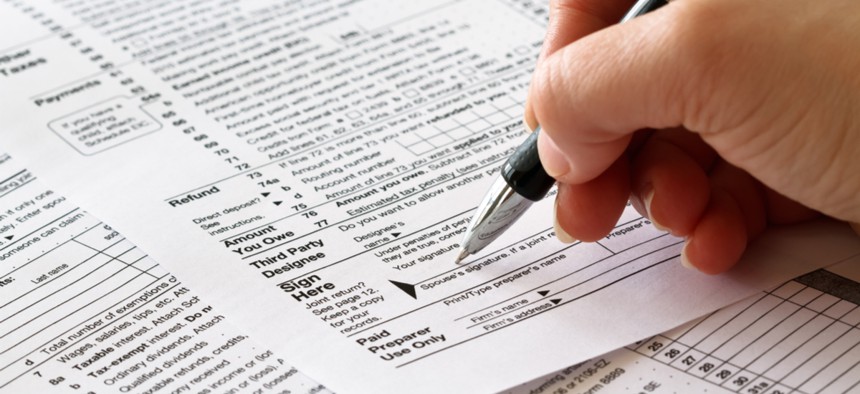It Costs Taxpayers $41 Per Phone Call To IRS

topseller/Shutterstock.com
The IRS wants to provide a better user experience to customers without breaking the bank.
One of the biggest challenges for the IRS is simply responding to the more than 116 million Americans who call the agency each year with questions.
Taxpayers calling the IRS last year waited an average of 17 minutes with only 53 percent of callers receiving services, despite how much taxpayers are shelling out for those calls, according to officials.
“Right now, for us to field a phone call, on average it costs $41per call,” said Michael Lin, IRS’ chief of user experience and design, speaking last week at an event hosted by Government Executive. “To take that a step further, for us to help someone in person at one of our tax assistance centers, it’s about $67 on average per visit. That’s a huge cost for us as an agency.”
During the last tax filing season—between the months of January and April—wait times and service improved over their year-round averages, but Lin said the IRS is hoping its new digital investments will further boost both the tax-paying experience for Americans and pay dividends for the agency in the long run.
Last fall, the IRS rolled out a new mobile-friendly website, which—during tax season—is the most trafficked government website, with 496 million visits and 2.2 billion page views in 2017. Users can make payments or check on their tax refund status online.
In addition, IRS’ improved digital presence includes the IRS2go application, which has been downloaded more than 23 million times. Lin said IRS has received 279 million online refund requests, “diverting from phone lines” the agency’s most common question—“Where’s my refund?”—to digital channels, which cost pennies on the dollar in comparison to calls or in-person visits.
“One of our goals for digital transformation is to identify those high-volume, low-complexity tasks and move them from traditional channels such as the phone line or in person and move them online,” Lin said. “It’s massive savings.”
Lin said the IRS is now employing the customer service best practices that companies like Amazon do, adopting an agile methodology whereby projects roll out iteratively over weeks rather than years. New rollouts, such a website designs, and surveyed by focus groups of real taxpayers to test for usability and intuitiveness. Citizens have noticed, with researchers at Forrester Research crediting IRS with the biggest improvement in perceived digital experience across government.
Only two tax seasons ago, just 38 percent of callers wanting to speak with an IRS assistor made it through and wait times ballooned to 30 minutes or more. Challenges remain, including uncertainty year-to-year in the IRS’ budget, which has been cut repeatedly in recent years. And as Lin said, paying taxes is never going to be high on the list of fun activities, but IRS’ push to use digital platforms is helping make it faster and cheaper.






